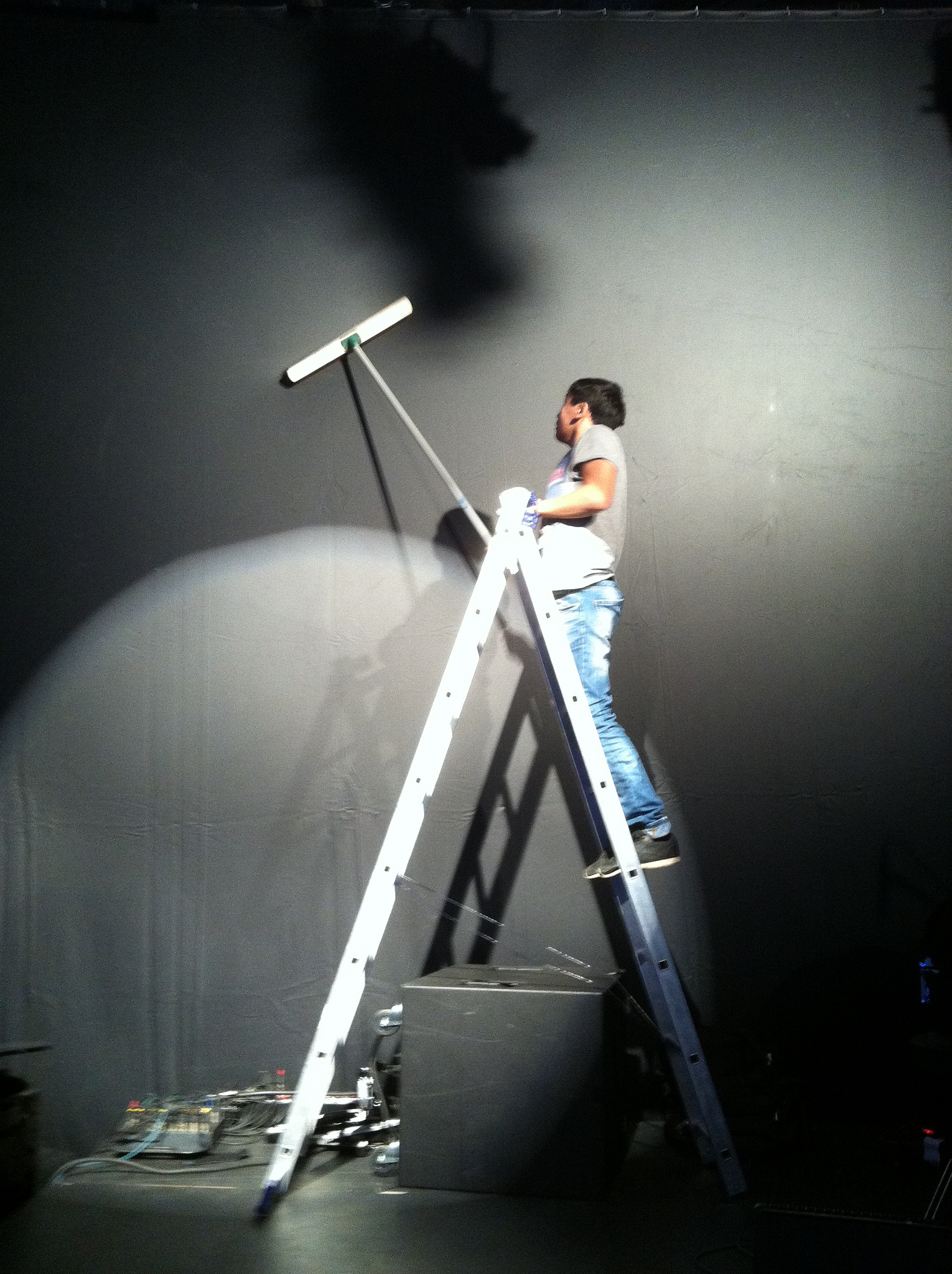The Night of the Unexpected
Deep Screen Resolution
During the autumn of 2013, I was invited to play a concert with the Dutch band Knalpot, during The Night of the Unexpected in Moscow. The invitation came from the Russian government, to celebrate 100 years of trade between the Netherlands and Russia. Coincidentally, it was timed just after the implementation of a federal law passed on June 29, 2013, banning the distribution of propaganda to minors to promote non-traditional sexual relationships. A timing that put a strange context of control over the event.
A mediator working for the Dutch embassy in Moscow helped us through the process of obtaining our visa. Besides the normal requests, he demanded a map of my setup, a rider (the list of technological needs – I requested an RCA (analog) connection and a list of gear. He also spoke about permitted AV behavior, referencing the new ban on propaganda. I had to explain my intentions, describing the generation of synced live video, by using the sound of Knalpot.
The Night of the Unexpected arrived. The venue was big and we set up in the middle on an island built of scaffolding. A big projector graced the prow of our island, pointing at a professionally suspended black screen. A technician handed me HDMI (digital, not the requested analogue RCA), and an analog-to-digital converter. Surprised at what seemed like problems stacking up rapidly, I turned to the event’s producer:
< Where will I project?
> This is the screen (she pointed at the black screen)
< A black screen will not reflect the light; it will absorb light, which means the projection will not show. I need to project on a white screen.
> In your rider it did not specify a white screen. I ordered the best technology in Moscow. It is the most expensive.
(silence)
< Can I show you what I mean? We can test it
… Can I have the RCA I requested in my rider?
> (producer points at HDMI cable and analog-to-digital converter)
We have this for you. It’s better, it’s digital.
< I requested analogue out. I need to send my output unconverted, from my synthesizer to the projector, to keep it untransformed and synced with the band.
> This is not possible. HDMI is better.
None of my primary issues resolved. But it was only when the rehearsal started that I realized that I had a much bigger problem (and found the cause of some of the smaller complications): in the corner of the island, next to a video server, a Russian video engineer (or what I like to call the ‘Russian video police’) screened my live video for offensive content, taking the liberty to overlay or even cut my stream at any time. The digital video server of the Russian video police digitized my analog, synced video stream, not only corrupting its intrinsic analogue qualities by replacing analogue scanning (line) artifacts with digital macroblocks, introducing an aspect ratio conflict (the image got stretched), but also its timing, by adding a two-second delay. In the end, my performance became a barely visible, indiscernible disaster.
However that night, The Night of the Unexpected, something also became very clear to me: the shortcomings in the use and understanding of the term resolution. During the performance, the differences between the resolved image on the black screen and the image resolved on my check monitor differed not just in terms of brightness or aspect ratio, but also in terms of aesthetics, timing, and most importantly, in terms of power. I realized then, that even though a screen often illuminates a situation, what happens beyond the screen is actually often obscured by the screen. The screen acts as a veil or cover, concealing (most of) the technological processes involved in resolving the image.
In order to understand technology better, the term resolution needs to be expanded to mean more than just the dimensions of the screen or display; a final resolution is not just a matter of width and height. A critical reflection of a screens’ resolution considers the technological procedures and trade-offs a programmer or artist has to deal with beyond (or behind) the screen: the processes of power and standardization, involved in creating or resolving a final image on the screen.
 A drawing of my setup during the Night of the Unexpected, Moscow, 2013.
A drawing of my setup during the Night of the Unexpected, Moscow, 2013. 
The Russian black screen, in the process of cleaning before the performance.
